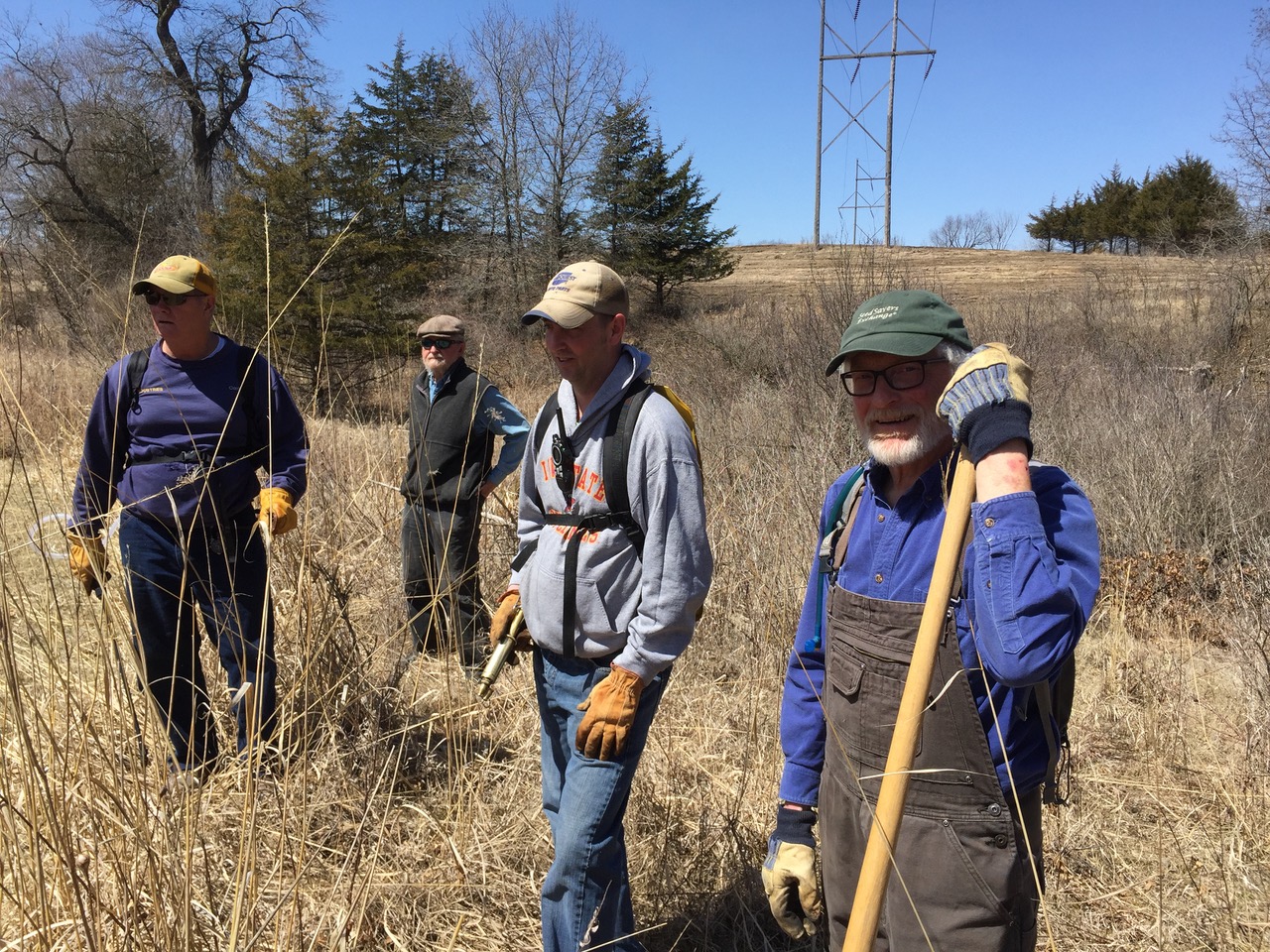
Going over the plan with the burn crew. 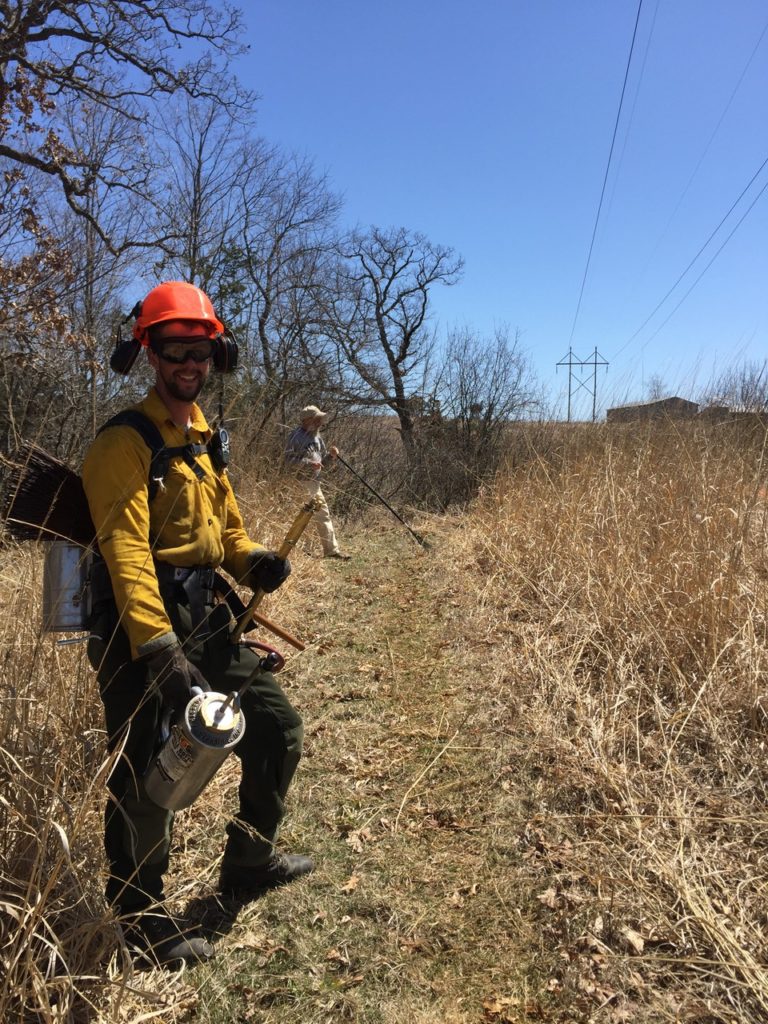
Protective, non-flammable clothing, gloves, boots, and head and eye covering is a must. 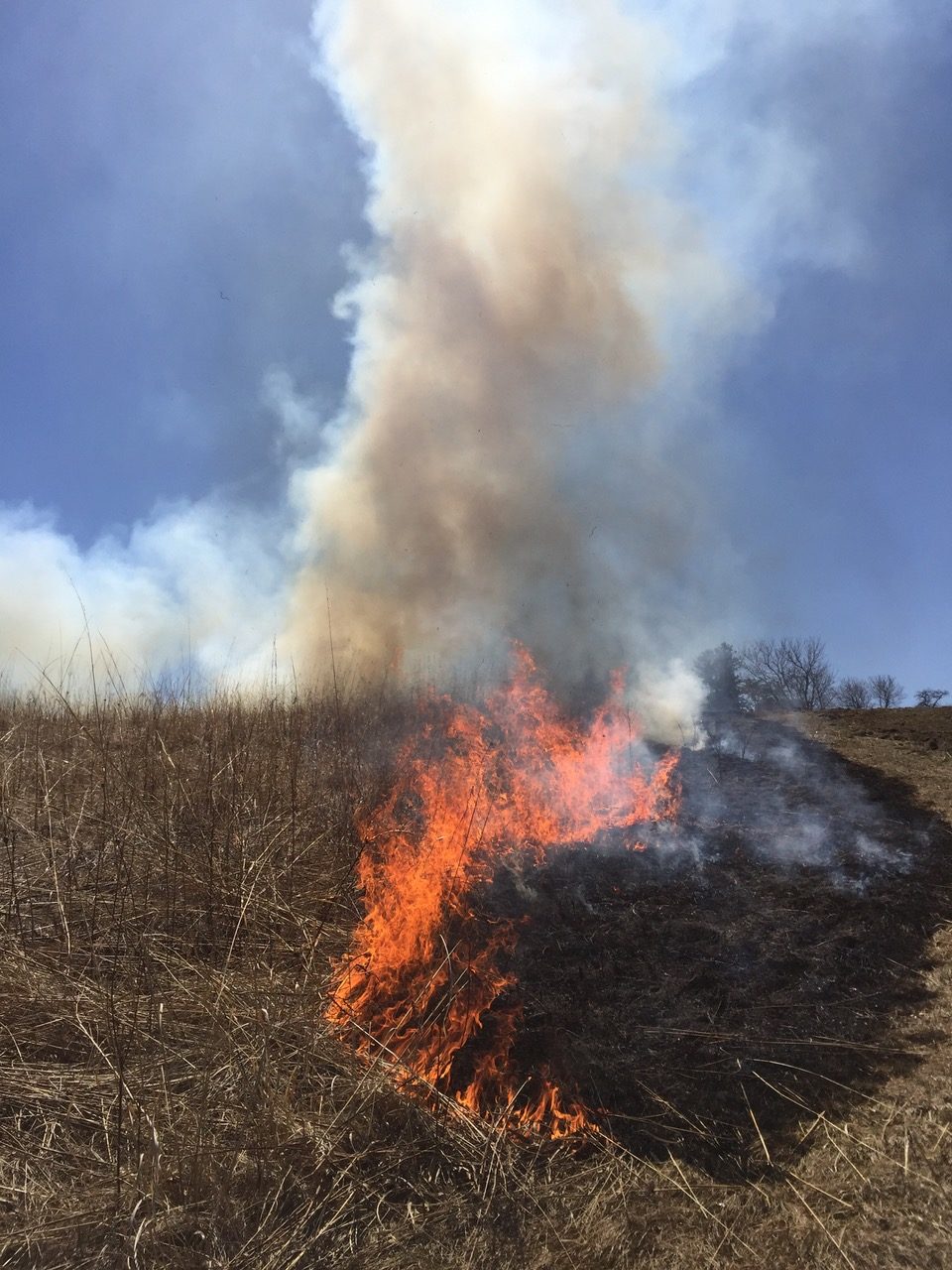
The backing fire moves uphill towards the smoke of the headfire in the background. 
Ensuring that any fire which attempts to creep back across the mowed firebreak is put out with backpack or ATV sprayers. 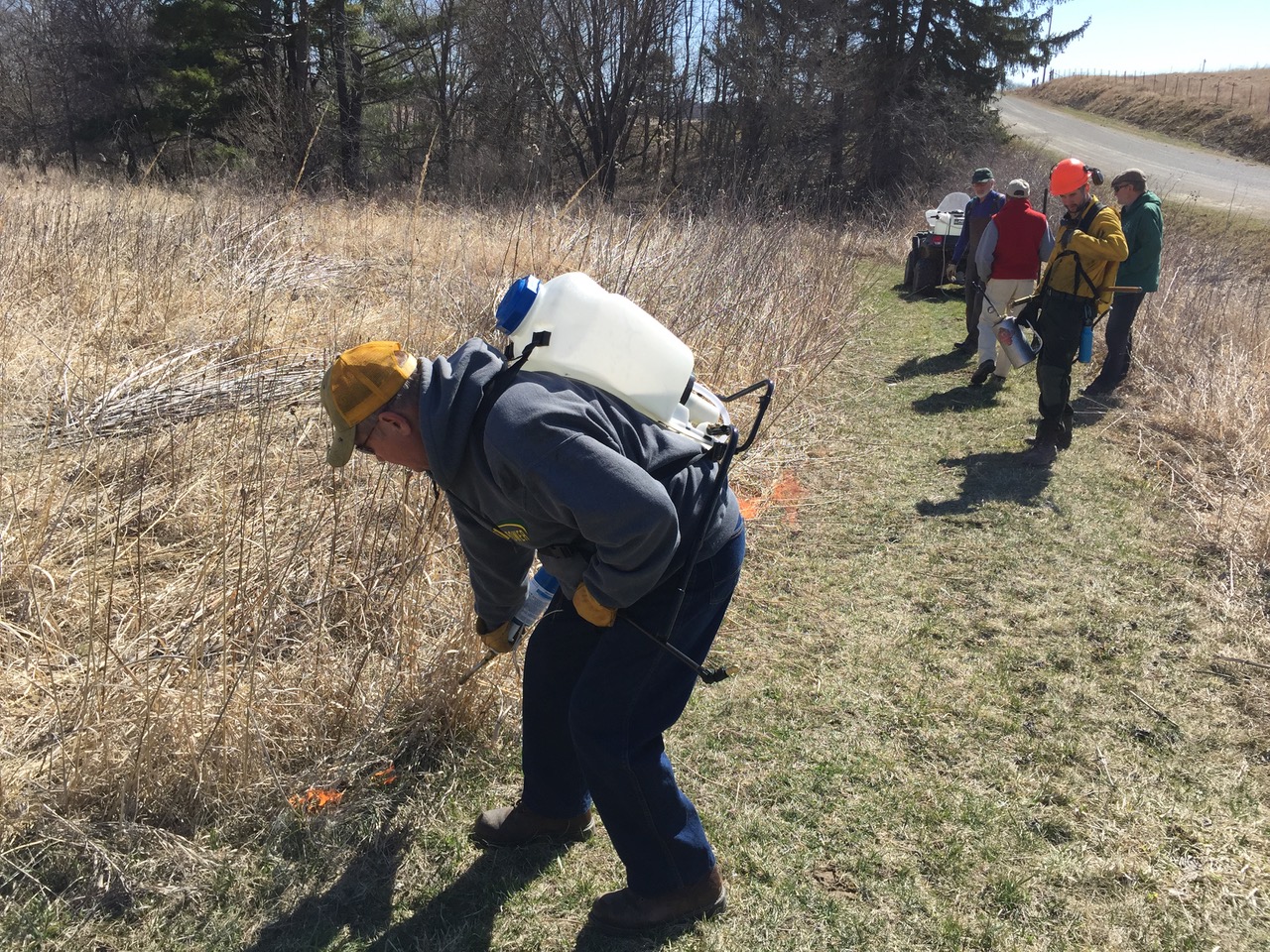
Using a propane torch to ignite the prairie. A drip torch or garden rake is often a more effective and safer means for ignition. 
Preparing the Drip Torch 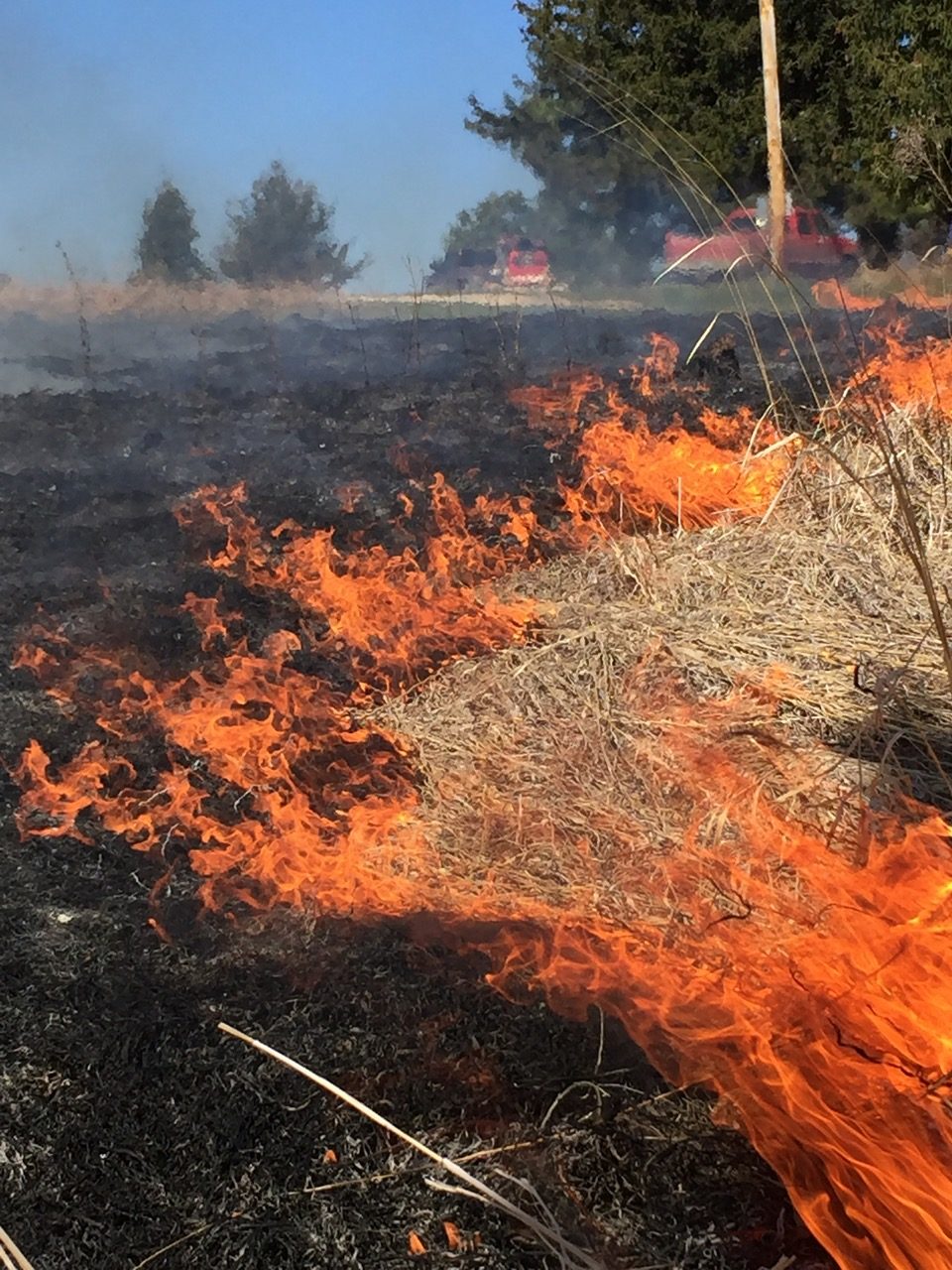
Allowing the fire to back under the power lines, preventing any chance of arcing through the thick smoke of a head fire. 
This prescribed burn unit was 4.3 acres. 
Again, watching the backfire to prevent any fire from jumping across the mowed firebreak.. We pre-wet the mowed firebreak with the ATV sprayer, both as an extra precaution and as a means to greatly reduce the work involved close to the heat. 
First we lit a backfire, then a flank fire on the side, and finally the head fire. 
The black after a successful burn. 
One safe area to be is the already burned area, sometimes called “the black”. 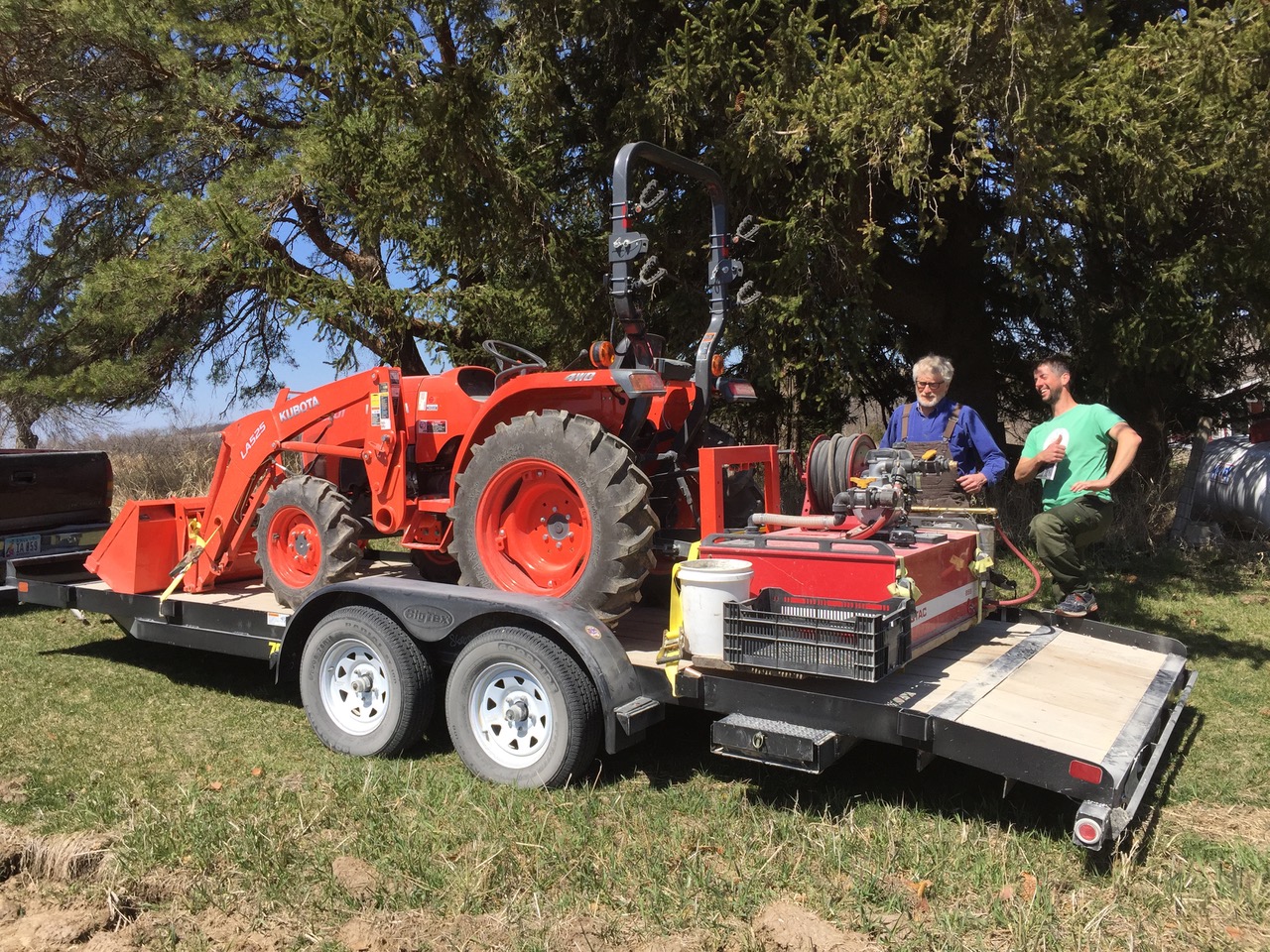
Carl and Brad taking a fun photo after the morning’s project. The tractor carries a 85 gallon fire pump and other equipment — serving as another tool in the prescribed fire toolbox. 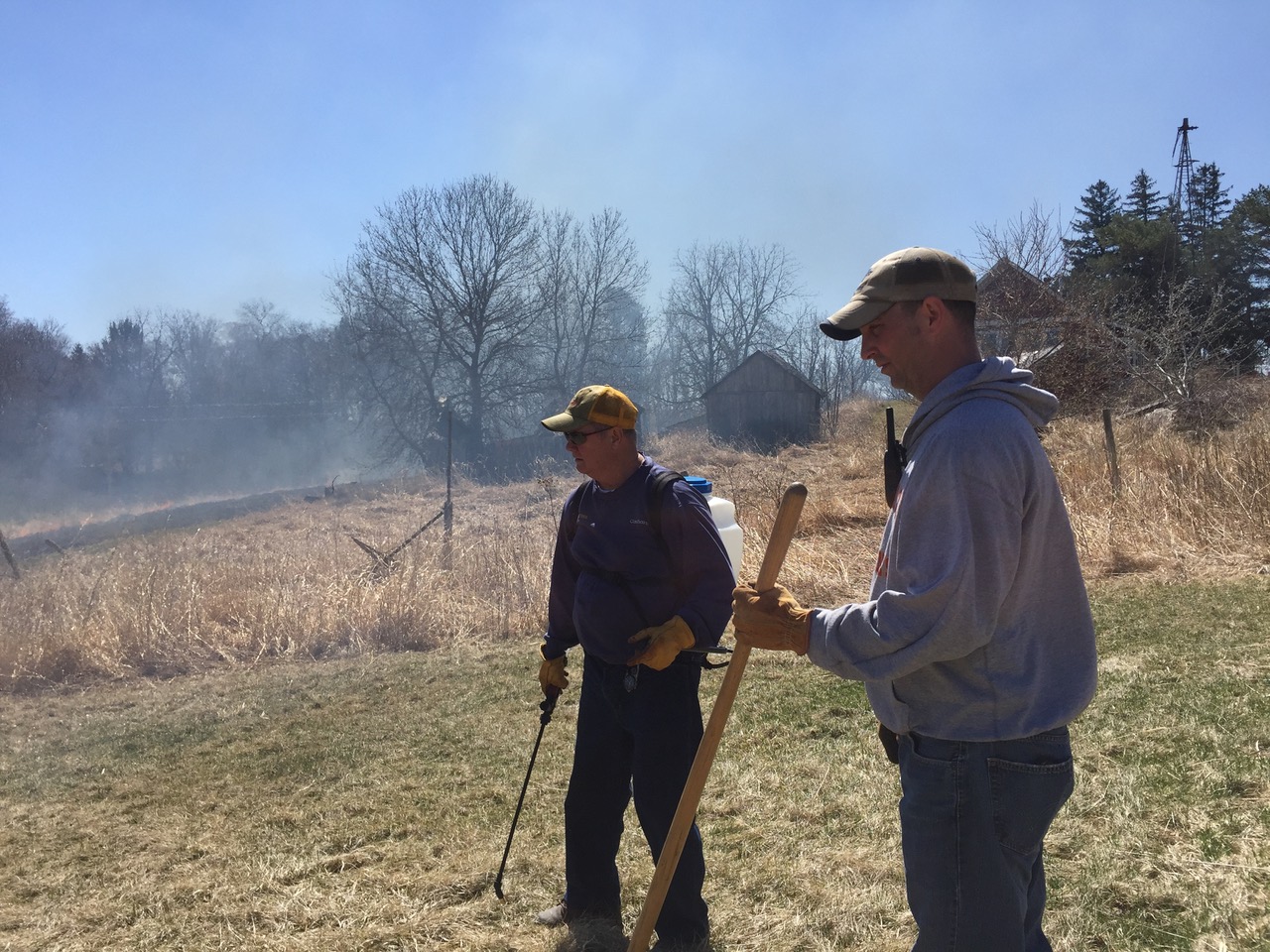
Keeping an eye on things and using radios for good communication was key. 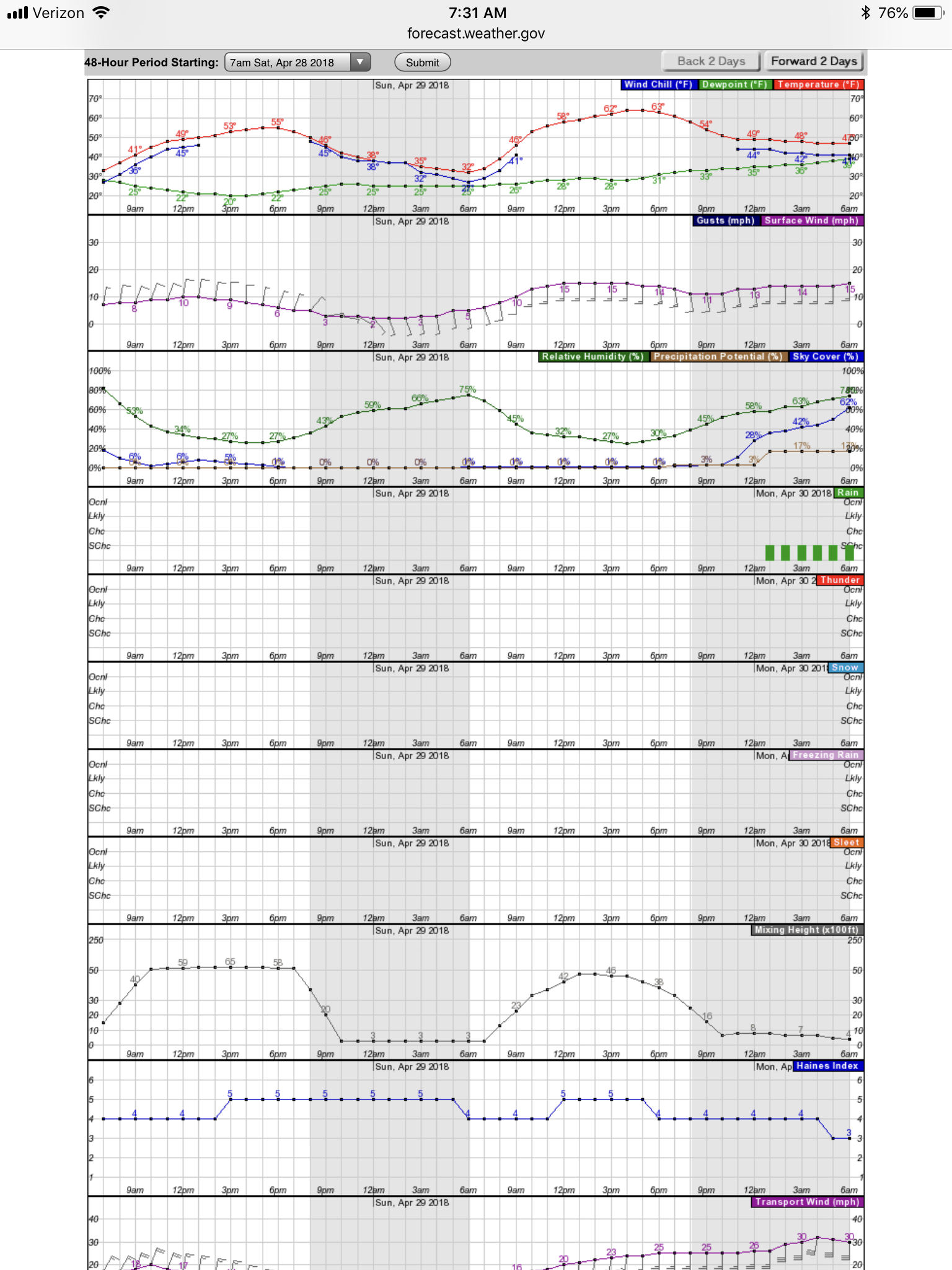
NOAA Weather Point Forecast. We burned from around 9am-noon. Note the dropping relative humidity. By afternoon, conditions were extremely dangerous (~ 25% R.H.) For this reason, an evening burn is often preferred as R.H. begins to climb back up and wind tends to die down. 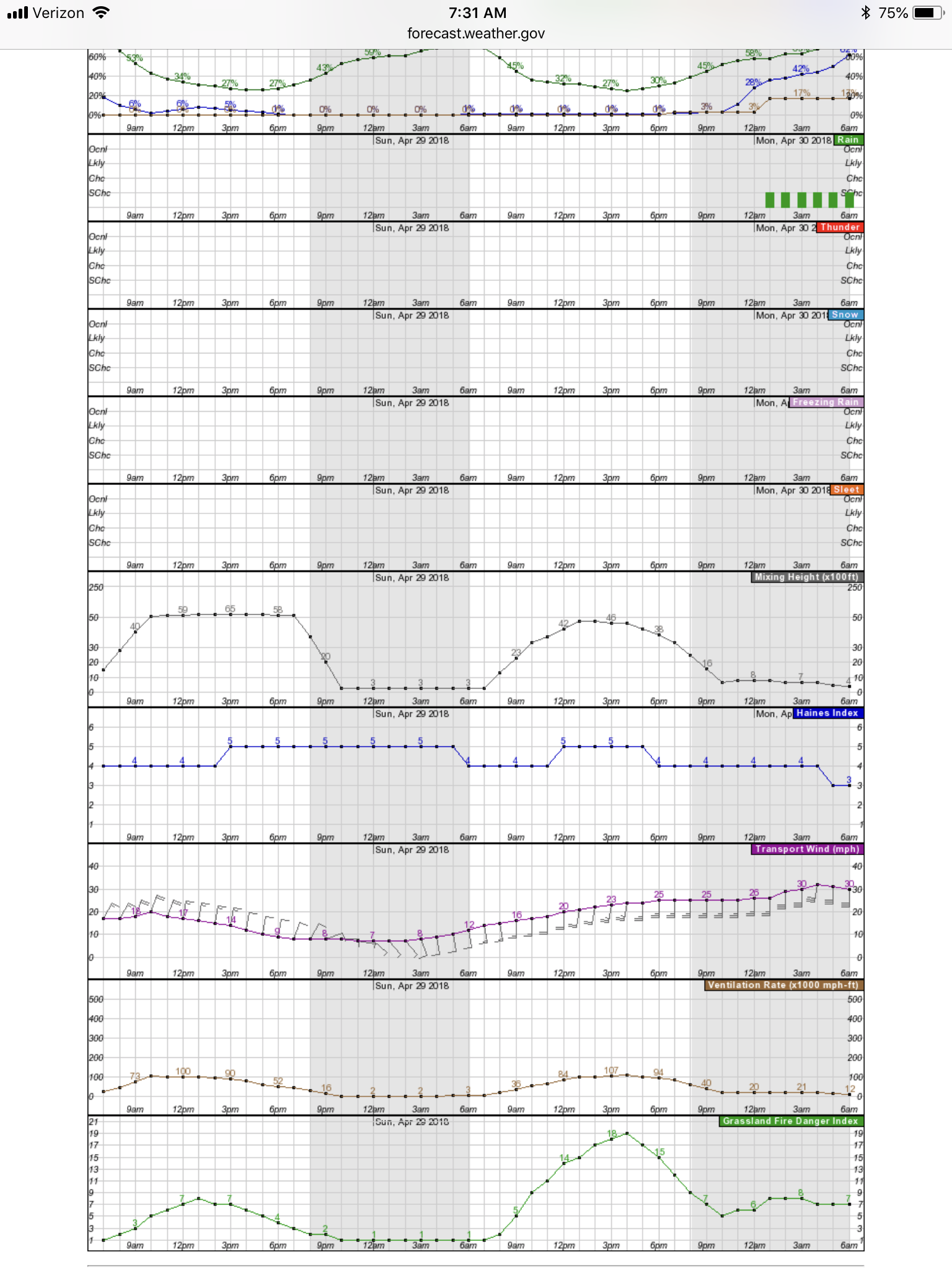
NOAA Weather Point Forecast cont… The forecast provides information that is particularly helpful for a prescribed burn. A weather instrument can then be used to measure and compare on-site conditions with the forecast. 
Job well done!
Middle Bear Bluffs Farm Prairie Burn
